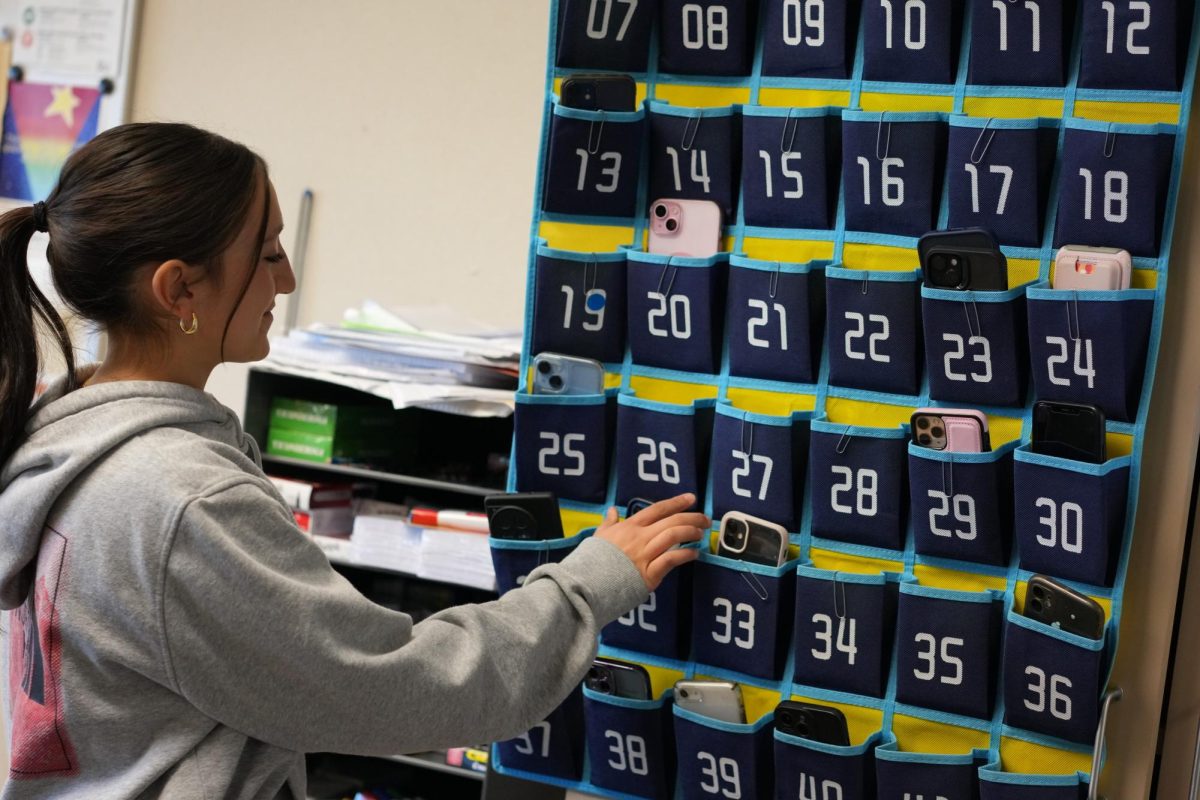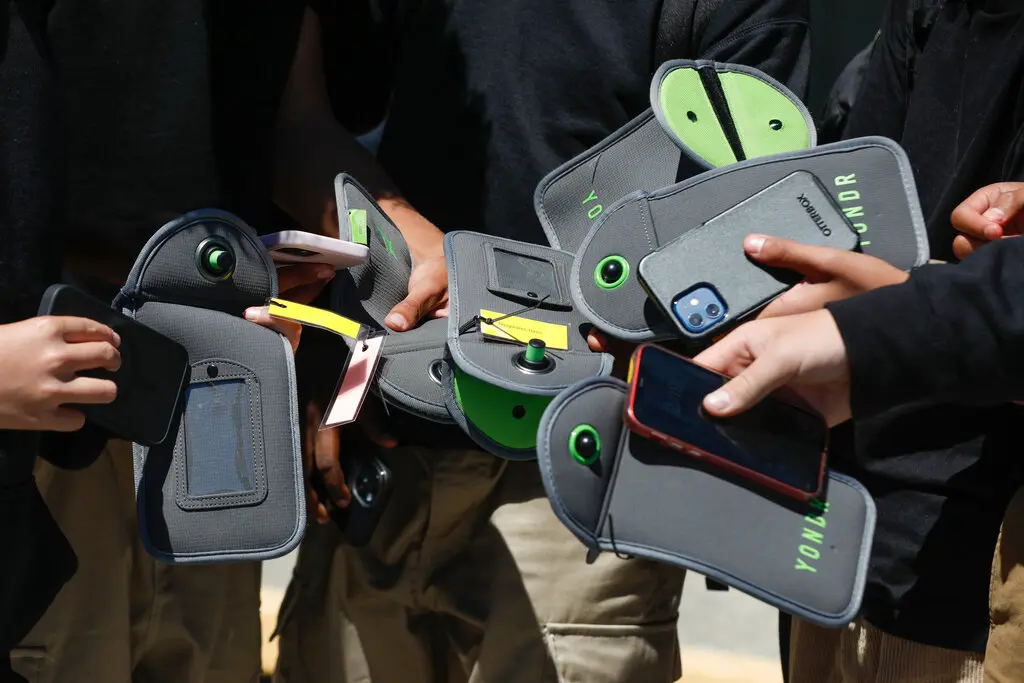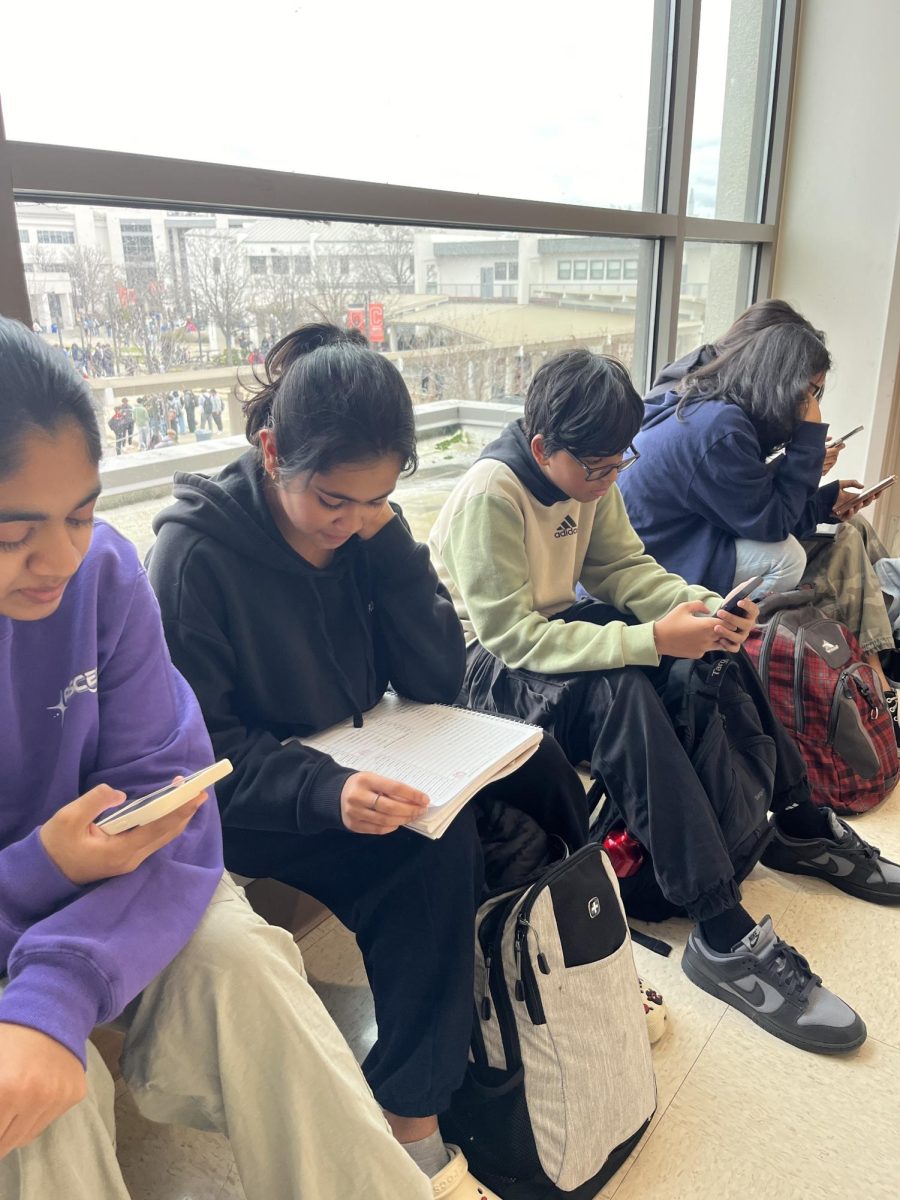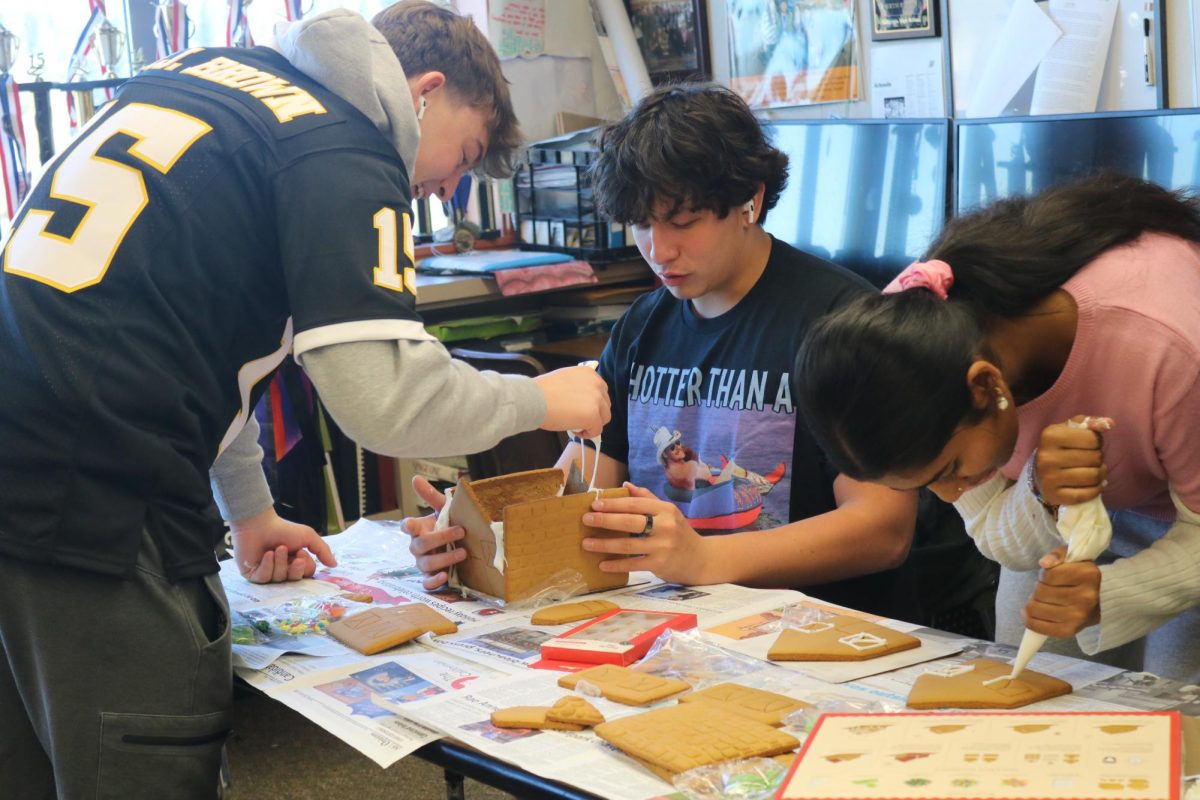Gov. Gavin Newsom’s recent signing of the Phone-Free School Act will require California public high schools to restrict or ban smartphones by July 1, 2026.
For schools like Cal High, the law should bring significant changes to how students interact with each other on campus.
Based on what other school districts have done, students’ phone use could be restricted through various methods.
According to “Ed Source,” one such way that schools in California have been enforcing phone bans is through “cell phone hotels”, which stow phones in pouches that can only be unlocked by school staff.
Another more common example is the usage of wall caddies, pockets attached to classroom walls that are able to store phones.
Principal Demetrius Ball emphasizes the importance of supporting students through this transition.
“We’re committed to helping our students navigate the changes that come with this new policy,” Ball said during a press conference with The Californian. “While this is a shift for everyone, we believe that by teaching students to manage technology responsibly, we can create a better, learning environment.”
As the San Ramon Valley Unified School District prepares to implement the new policy for the 2026-2027 school year, Cal is planning to include workshops to educate students about healthy technology habits and to help them adjust to a phone-free school day.
Many Cal teachers are optimistic about the potential benefits of restricting phone use.
AP Environmental Science and chemistry teacher Sarah Gipson sees the phone ban as an opportunity for students to reinforce their learning and improve academic performance.
“In my classes, students are constantly checking their phones,” Gipson said. “Whether it’s texting or social media, it disrupts the learning environment. This [Phone-Free School Act] could create a classroom where students are more present and engaged with the lesson.”
But for students, the phone ban raises concerns about how it will impact their daily lives.
Junior Hailey Yi sees her phone as a critical tool for academic and personal organization.
“I use my phone to keep track of assignments, deadlines and even communicate with my parents about after-school plans,” Yi said.
She said she is worried the ban could create unnecessary barriers for staying connected with her family.
For some students, the phone ban also raises safety concerns.
Senior Ben Seo expresses concerns over not being able to reach his parents or access emergency information during the school day.
“What if I need to contact my mom in an emergency or let her know I’m running late?” Seo said. ”I rely on my phone for security, and I feel like that will be taken if I don’t have my phone.”
Freshman Trey Lim agrees, arguing that phones are not just a distraction.
“It’s a key part of communication and a major aspect of being present and social,” Lim said.
Cal teachers are also considering the practical aspects of enforcing the phone ban .
AP United States History teacher Jackson Collins explains how maintaining this policy could prove challenging.
“Students will likely find ways to sneak phones into school, whether it’s through smartwatches or hidden in backpacks,” Collins said. “It’s easy to say phones should be banned, but enforcing it on a daily basis could be tough.”
While the enforcement challenges are immense, AP United States History teacher Chris Doherty believes the phone ban could encourage more authentic social interactions among students.
“Phones create barriers and are distractions,” Doherty said. “Without phones, students can build stronger relationships and embrace the real world.”
But many students and teachers are convinced a total phone ban is not a solution.
Junior Julian Vasconcellos argues that schools should work to help students manage phones responsibly.
“We need to learn how to balance our digital lives with our schoolwork,” Vasconcellos said. “Phones are a part of society and we will be using them throughout our lives, so banning phones completely doesn’t teach us how to be responsible.”
Collins agreed with the important impact technology has on student lives, especially after high school ends.
“When you get to college, your professor isn’t going to care if you use your phone,” Collins said. “In a world full of technology, we should learn how to properly utilize our devices rather than restrict them. Although banning phones is a good start, we should eventually modify parts of this.”
The impact of these new regulations on campus life remains uncertain.
“It’s going to be a big adjustment for sure,” junior Ethan Suehiro said.
Administrators unsure how new law will affect students
District still working on rules that will be put in place
Christian Jung, Staff Writer
February 12, 2025
Freshman Nabila Haqiq puts her phone in a wall caddy. Many teachers at Cal High use phone jails and wall caddies to prevent student phone use during class and lesson time.
More to Discover
About the Contributor

Christian Jung, Staff Writer
Junior Christian Chung is a first year reporter for the Californian Paper. As an aspiring writer, and an avid learner, Christian is excited to work with others to create interesting newspapers for the Californian. Christian has a wonderful younger sister, a dog named Bernie, and a list of hobbies that range from competitive sports like basketball or snowboarding, to more simplistic things such as art and listening to good music (preferably some Drake, Bryson, Party).






